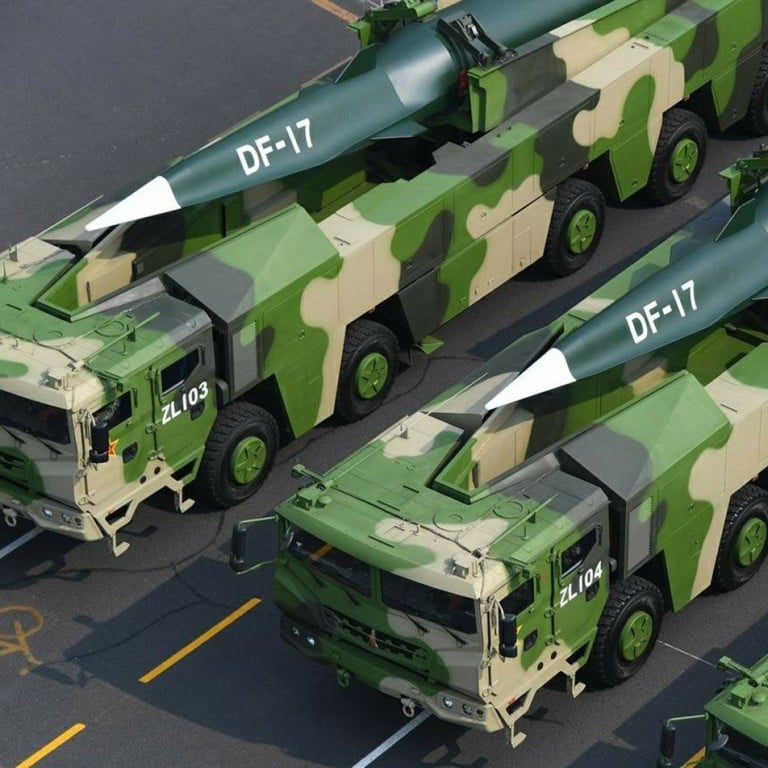
China is working on ‘invisible’ missile launchers for ‘future combat’
- AI technology will be used for the Dongfeng launchers, PLA Rocket Force researcher tells state broadcaster
- Military analyst says they ‘could evade detection from satellites and the infrared rays of radar and drones’
China is developing launchers for its Dongfeng series of road-mobile missiles that could evade detection by satellites, radars and drones, according to state broadcaster CCTV.
“I believe that on the battlefields of the future, our counterparts will not see us or know the whereabouts of our [missile launchers],” he said on the CCTV programme, which aired on Sunday.
“The relationship between the missiles and the launching platform is like bullets and a gun … what we can do is to explore the potential for the platform and provide more options for future combat.”
China puts aircraft carrier killer nuclear missiles on show ‘in warning to US’
The DF-17 medium-range missile is believed to be the world’s first active hypersonic glide vehicle weapon, and able to penetrate US missile shields in the region. Yang’s team designed a camouflage launch vehicle for the missile.
The CCTV programme included footage of camouflage launchers developed by Yang’s team for missiles including the DF-41 solid-fuel road-mobile intercontinental ballistic missile. The DF-41 has an estimated range of more than 12,000km (7,450 miles), meaning it could hit a target on the US mainland.
Song Zhongping, a military analyst and former PLA instructor, said the camouflage and design of missile launchers was a key part of battlefield tactics.
“Protecting troops and weapons is the top priority in all warfare situations, and especially given China’s ‘no first use’ nuclear policy, which requires better protection during preparation for a ‘second strike’,” he said.
That policy is for China to only use its nuclear weapons in response to a nuclear strike against it.
Almost all of the missiles in the Dongfeng, or DF, series are dual-capable weapons that can carry conventional and nuclear warheads.
PLA deploys upgraded aircraft to South, East China seas to ‘proclaim sovereignty’
Song said that the launchers being developed “could evade detection from satellites and the infrared rays of radar and drones, turning the PLA’s missile systems into chameleon-like objects and keeping them hidden in any terrain”.
At present, the PLA has one carrier-based fighter jet, the J-15, which was made in China based on a prototype of the Soviet-designed Su-33. A modified version of the warplane was developed for the Fujian, which has electromagnetic catapults.

